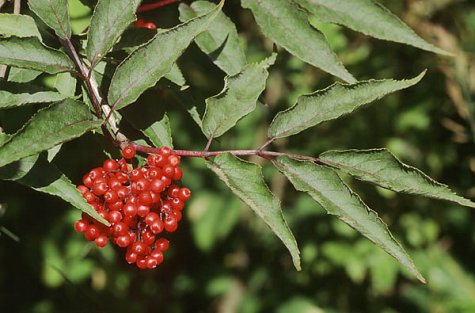A foreign tree in our nature
Photo: Arne Ader
Translation: Liis
Red-berried elder.
| Red-berried elder |
Punane – leeder
|
Sambucus racemosa |
The red-berried elder has slowly crept into Estonian nature. It was introduced in parks and gardens as a decorative tree - the flowers as well as the fruits are pretty - and has then been "distributed“ by birds who eat the red fruits, drupes, with gusto, and drop the seeds, together with a portion of fertilizer, on the ground. So we meet the red-berried elder at forest verges, in mixed forests, even in spruce stands, in wasteland areas in the city, on "private“ refuse dumps, at the back of garden sheds ...
For some reason the little berries of the red-berried elder are thought to be poisonous. The seeds are slightly toxic, but the fruit flesh is tasty, and nutrition specialists consider it good for the organism. But – it isn’t worth testing the raw berries, and the seeds must certainly be spit out. Jelly made from the berries is said to taste very well.
In western Estonia and on the islands the (black) elder is seen in nature: an imported member of the same family that has spread similarly to the red-berried elder, but being less frost-hardy, it rather grows in maritime areas. Its larger racemes of black berries, similar to those of rowanberries, are toxic.









